Traditional food in Myanmar (formerly Burma) reflects the country’s rich cultural diversity and agricultural abundance. The cuisine is characterized by bold flavors, aromatic spices, and a combination of sweet, sour, salty, and savory elements. Here’s an overview of some of Myanmar’s most beloved traditional dishes:
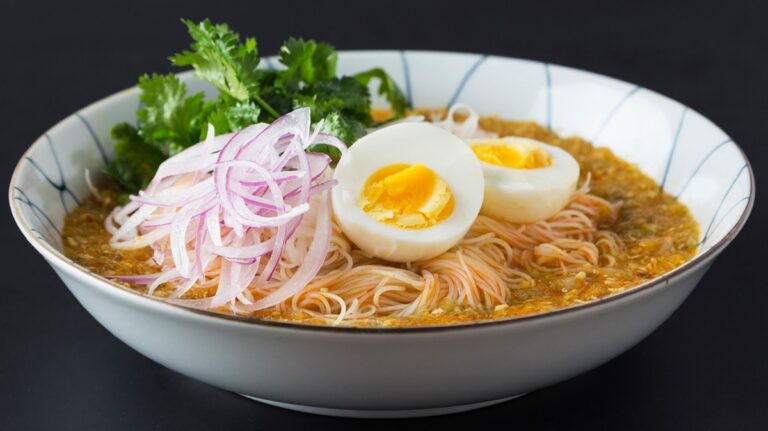
1. Mohinga
Often considered the national dish of Myanmar, Mohinga is a comforting fish soup served over rice noodles. The broth is made from fish (usually catfish), lemongrass, ginger, garlic, and a variety of spices. It is topped with crispy fritters, boiled eggs, and fresh herbs. Mohinga is typically eaten for breakfast but is enjoyed at any time of the
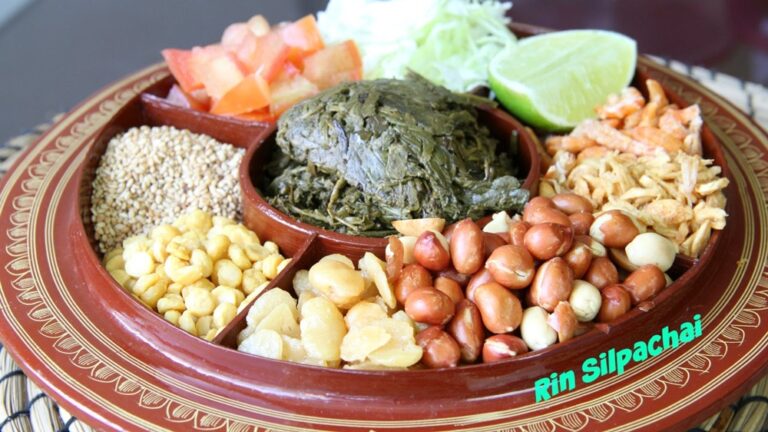
2. Tea Leaf Salad (Lahpet)
Lahpet is a unique and distinctive dish made from fermented tea leaves. These leaves are mixed with a variety of ingredients such as peanuts, sesame seeds, dried shrimp, garlic, and chili. The salad is often served with a side of rice and is known for its tangy and bitter flavor profile, providing a refreshing balance of flavors. Lahpet is also commonly served as a snack or appetizer during social gatherings.
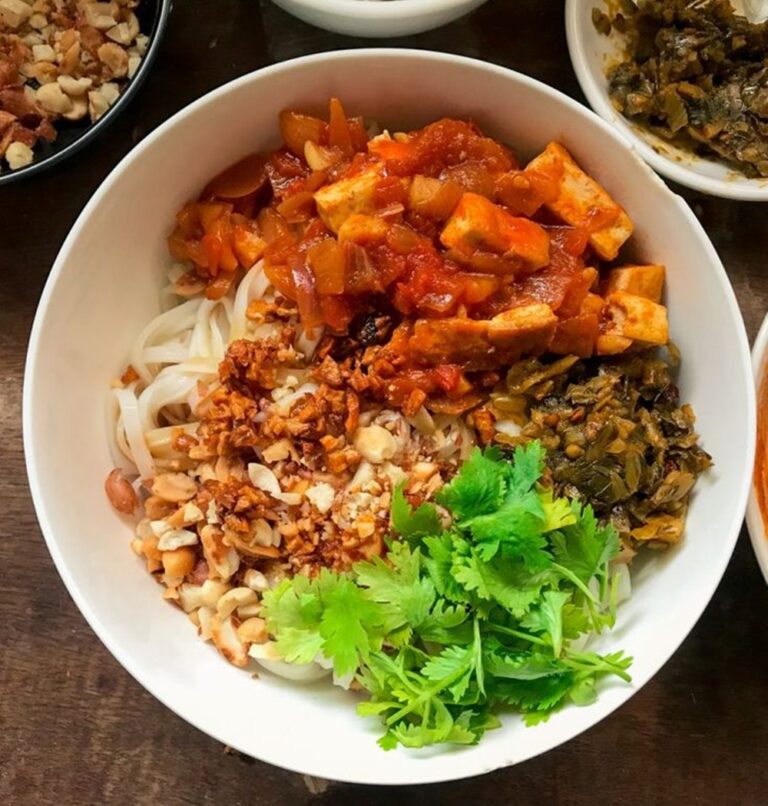
3. Shan Noodles
Originating from the Shan State in Myanmar, Shan noodles (or Shan Khao Soi) are a popular dish throughout the country. This dish consists of thin rice noodles served in a mild, savory broth made with chicken, pork, or beef. It’s often garnished with fresh herbs, fried garlic, and chili paste. Shan noodles are usually served with a side of vegetables and are known for their light yet flavorful taste.
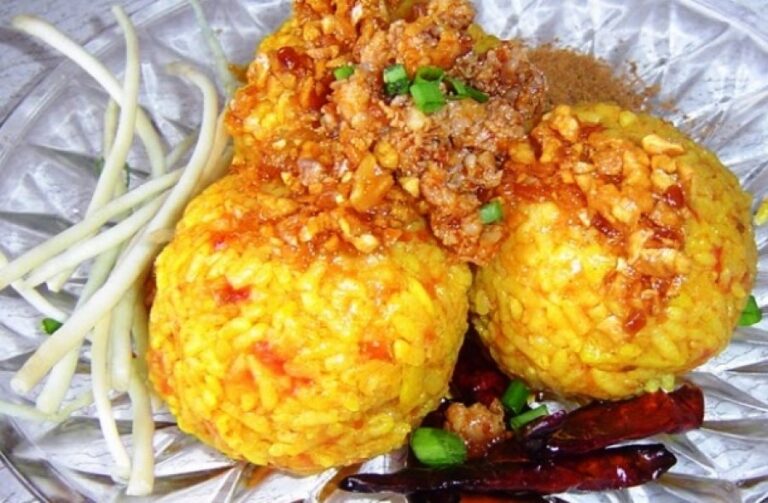
4. Grilled Fish (Nga Htamin)
Myanmar’s abundant rivers provide an excellent variety of freshwater fish, and Nga Htamin (grilled fish) is a favorite way to enjoy these local catches. The fish is marinated with turmeric, garlic, chili, and other spices before being grilled to perfection. It’s often served with a side of rice and a variety of vegetables.
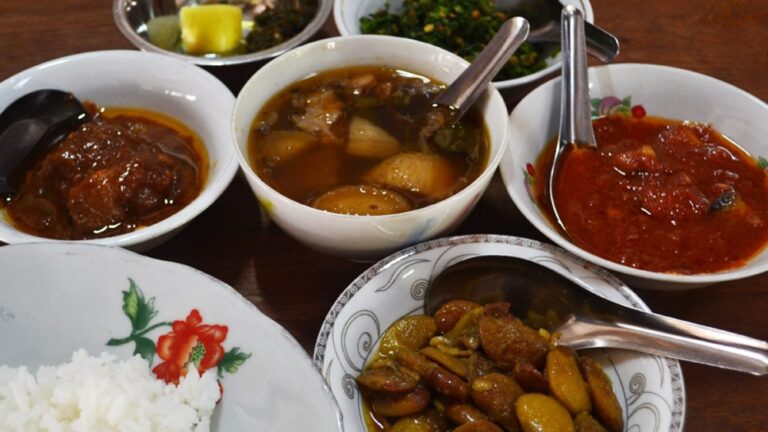
5. Burmese Curry (Curry with Rice)
Curry in Myanmar is often quite different from other South Asian curries. The flavors are milder, with less reliance on coconut milk. Burmese curries typically include chicken, pork, beef, or lamb, and are served with rice and a variety of side dishes like pickled vegetables or salads. The curry is cooked with spices such as turmeric, ginger, garlic, and onion.
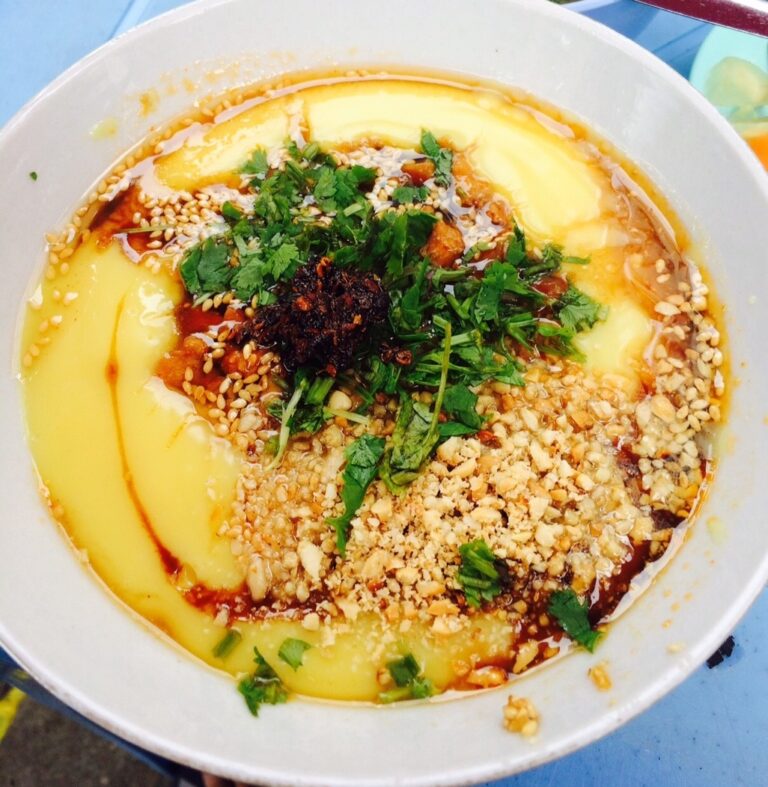
6. Fried Tofu (Tofu Nway)
In Myanmar, tofu is made from chickpea flour rather than soybeans, which gives it a denser texture. Tofu Nway is a popular dish where tofu is fried and served with a variety of dips, including chili paste, tamarind, and fish sauce.
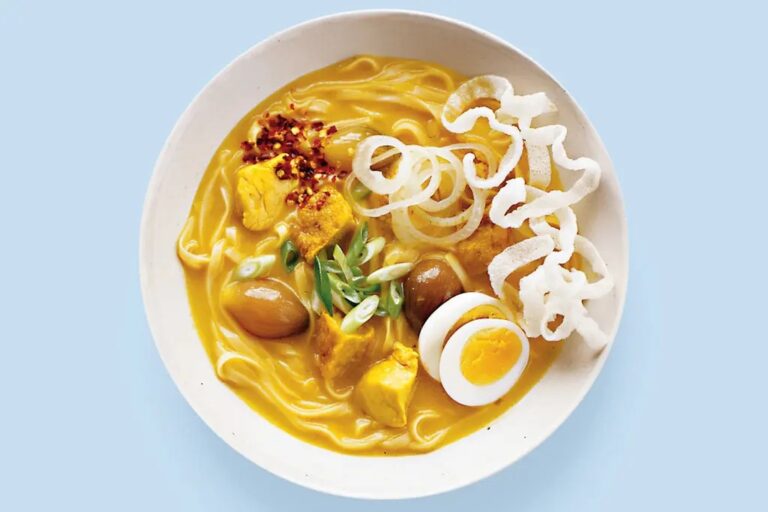
7. Ohn No Khao Swe – Burmese Coconut Noodle Soup
Ohn No Khao Swe translates roughly to “noodles with coconut milk.” It’s a flavorful and comforting dish that combines egg noodles in a coconut milk-based chicken broth, topped with crispy fritters, boiled eggs, onions, and fresh lime.
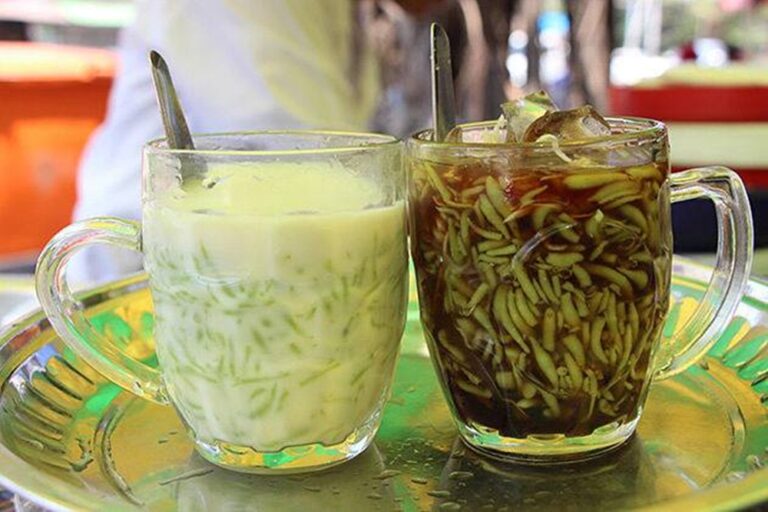
8. Mont Let Saung – Burmese Coconut Milk Dessert
Mont Let Saung (also spelled Mont Lone Saung) is one of Myanmar’s most beloved traditional desserts, especially popular during the hot summer months and the Thingyan Water Festival, the Burmese New Year celebration.
Mont Let Saung is a refreshing and sweet dessert made from glutinous rice balls and sago pearls, served in a cool, creamy coconut milk syrup. It’s often topped with palm sugar syrup and sometimes garnished with crushed ice, making it the perfect treat to beat the heat.
Regional Influences
Myanmar’s food is influenced by its neighboring countries, such as China, India, and Thailand, but the dishes have been uniquely adapted to Myanmar’s local tastes and ingredients. For example, Myanmar’s curry dishes share some similarities with Indian curries but tend to be less spicy. The Shan State has its own distinctive culinary traditions, influenced by both Myanmar and China, especially in the use of rice noodles.
Dining Culture
Traditional meals are often served in a communal style, where family members and guests share multiple dishes, creating a sense of unity and celebration. Myanmar’s cuisine is often eaten with rice, which is the staple food, and dishes are typically eaten with hands or with a spoon and fork, as is common in Southeast Asia.
For reservation for your accommodation:

